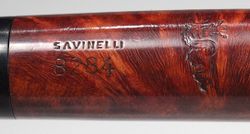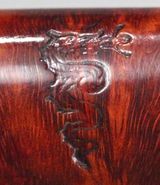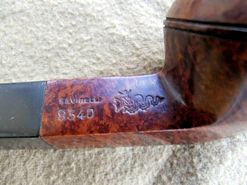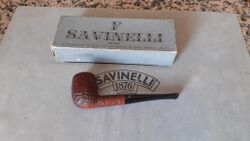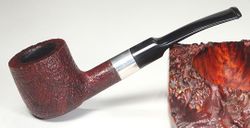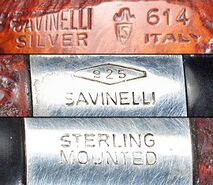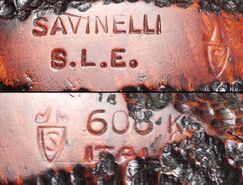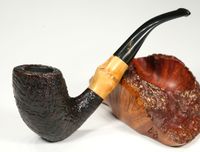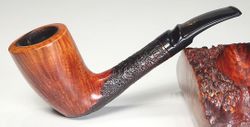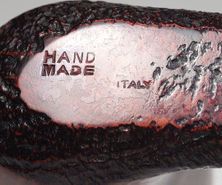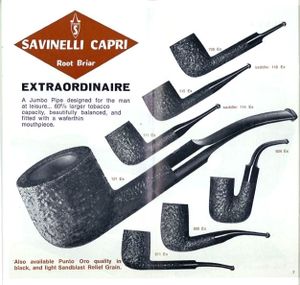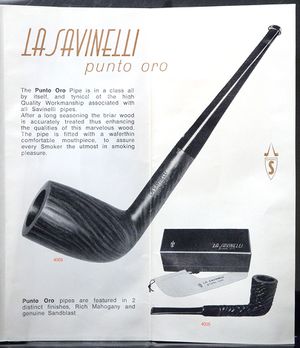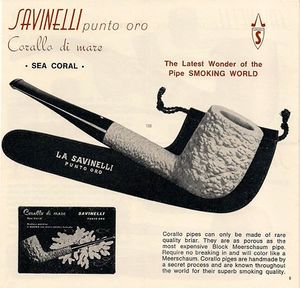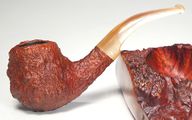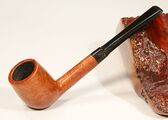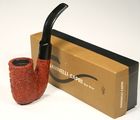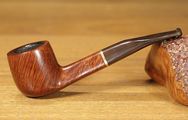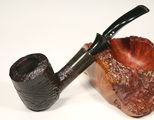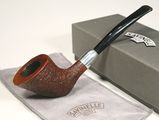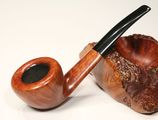Savinelli

Savinelli History
1876 was a year of breakthroughs: Thomas Edison patented the mimeograph, Julius Wolff-Eastport canned sardines for the first time, Alexander Graham Bell made the first telephone call,
Pyotr Ilyich Tchaikovsky completed Swan Lake, Melville Bissel patented the first carpet sweeper, Mark Twain published Tom Sawyer, and in Milan, Italy, Achille Savinelli opened one of the first shops exclusively focused on tobacco and smoking accessories.
That last item may seem relatively unimportant in the global scheme of advancements, but for those of us who love pipes, it was a monumental achievement, made even more difficult by the Italian government, which held a monopoly on tobacco. In addition, Achille was convinced that briar pipes represented the future of pipe smoking at a time when the market was dominated by clay and meerschaum. It may not have been obvious in 1876, but Achille Savinelli’s commitment to briar pipes would prove to be visionary.
He soon began designing his own pipes (different from the styling we associate with Savinelli today) and arranged their manufacture by local pipemakers in the Varese district of north-west Italy. The pipes became so popular that some were exhibited at the 1881 Esposizione Industriale Italiana (Italian Industrial Exposition)—the precursor to today’s Milan Fair, one of the largest trade fairs in the world.
- A very early example, marked ASM in a triangle with a silver dot on the stem, courtesy Doug Valitchka
- Another very early example, marked ASM in a triangle and MILANO with a silver dot on the stem, courtesy Giancarlo Spadaro
- An example marked 'F. Savinelli Genova Silver 0115', courtesy Giancarlo Spadaro, who speculates perhaps the 'F.' is the initial for Fratelli (Italian for Brothers). Perhaps an early example from Achille's brother's shop in Genova (Genoa in English)? Or perhaps this is a circa 1950s example, which coincided with a latter opening of a Savinelli shop in Genova?
- If you have additional information pertaining to F. Savinelli pipes, the possible date range for this example, or the Savinelli shop history in Genova, please add it here, or send it to sethile.pipes@gmail.com and we can add it for you.
Achille Sr. spent 14 years cultivating the company and building a strong customer base before passing the reigns to his son, Carlo, who ran the store for the next 50 years. Carlo increased the store’s exposure by building relationships with clients throughout Milan. He knew his customers
and their tastes, and he adapted his service and promotional talents to meet their individual demands. Driven by Carlo’s hospitality and the comfortable atmosphere he created, the Savinelli shop soon became the principal meeting place in Milan for pipe enthusiasts, where smokers could exchange opinions and discuss their own experiences—all with pipe in hand.
The store’s success kept Carlo and his wife occupied during business hours, leaving their son, Achille, to his own devices. Much like his father, and his grandfather before him, his “own devices,” as it turned out, were pipes. As his parents tended to the needs of customers, Achille Jr. preferred to stay in the back of the family shop, tinkering with pipes—designing and inventing. It was here, in the back of the small Milan tobacconist, where Achille Jr. created the first true Savinelli pipe.
As the Second World War began to sweep across Europe, however, Achille Jr.’s experimentation was cut short: he left his beloved workshop for five years of military service, and the experience provided him a new perspective on the role of Italy in the world marketplace. At the time the best-selling pipes in Italy were made abroad, despite the country’s steadfast reputation for producing the finest quality briar. There were Italian pipe makers, make no mistake, but these workshops and factories seemed to focus on maintaining high production numbers rather than on the quality of the product. For this reason, neither retailers nor customers recognized Italy as a serious exporter of quality briar pipes. Returning from war, Achille Jr. understood that his father’s small shop, though still the principal tobacconist in Milan, could never change this ironic precedent. He knew it would take more than sheer customer loyalty and rapport to shift the pipe making reputation of his country. It would take a superior product, with a unique aesthetic and the capability to withstand high levels of production without sacrificing quality, to shatter the mold. With this in mind, he decided not to return to his father’s shop. He needed to make his own pipes.
With his two best friends, Amleto Pomé and Mario Vettoruzzo, he assembled a team of fifteen employees to start a new business in the Varese region—the same area of northwest Italy in which his grandfather, Achille Sr., commissioned his own designs more than 60 years before.
Savinelli Pipes began production in 1948 and, although the pipes were of a superior quality and unique in their aesthetic, the brand wasn’t an immediate success. Few new brands are. It takes time for the public to catch on. Retailers were skeptical of placing Italian pipes alongside their best sellers from England or France, and customers, in turn, were hesitant to purchase a Savinelli over pipes by already established, foreign brands. Achille Jr. stood by his product, however; he knew it was only a matter of time before the world realized that these pipes were of a far superior quality, capable of competing with even the most well-established pipe manufacturers in the world. As it turns out, he was right. In less than a year, Savinelli pipes gained prestige in markets all across the world—heralded for their delicate balance of innovation and tradition, of form and function. Savinelli pipes were placed alongside the likes of Dunhill and Comoy’s in tobacconists from the United States to Europe, and, in time, this exposure modified Italy’s reputation; it was not only the premier exporter of briar, but now a premium source of fine briar pipes.
- circa 1949-50's LaMilano example and details, courtesy Doug Valitchka
- Glubileo d'ora Straight Grain Fiammata example and details, courtesy Doug Valitchka
Achille Jr. continued to oversee the factory and cultivate the brand until he passed it down to his son, Giancarlo. As the current President of the company, Giancarlo has faced a grave challenge: keeping the marque relevant during a period of gradual pipe smoking decline. Pipe smoking may not be as ubiquitous today as in past generations, but Giancarlo has nevertheless energized the family business, much like his grandfather Carlo, by adapting his skills to meet the demands of the customer. By ushering in new lines and series to compete with modern trends, while still maintaining the same strict standards for quality control his father introduced, Giancarlo has preserved the Savinelli legacy—a tradition he will continue to guard until he hands it down, improved, to his son Achille.
- Achille Jr. and Giancarlo, courtesy Doug Valitchka
Savinelli Today
Today, Savinelli is likely the first name that comes to mind when you think of the serially produced Italian pipe. Achille Jr. established the brand and brought it to world recognition, but Giancarlo and his team have kept it in the spotlight. Savinelli’s CEO, Sonia Rivolta, for example, has redefined the brand and helped to realize Giancarlo’s modern vision by revamping and adapting the marketing to better compete in the digital age. Together with Luisa Bozzetti, the director of the Savinelli factory, they’ve implemented a number of modern practices improving quality control and overall production as well.
Savinelli’s export manager, Luca Fontana, comments on these production practices:
- "“The process is something you cannot learn from books or from the Internet. It is a philosophy of our brand, and the people who make it must have experience. It is something that is handed down from generation to generation. You must know the raw material very well.”
From curing briar, to shaping, to mixing their all-natural stains, Savinelli conducts every step of production in house. Standard shapes are fraised on a machine—a technique shared by most other serially produced pipe manufacturers. What separates Savinelli from other marques is that the entire process, from sorting to staining, is conducted by artisans specialized in one very specific step of the pipe making process, thereby making them supremely skilled. One craftsman, for example, executes Savinelli’s various rustications; another sits in front of a huge pile of briar blocks, sorting them based on which individual shapes and series they’re best suited for. Another fits stems to stummels. This isn’t a large team either, numbering just thirty people. Taking all that into consideration, Savinelli could readily be considered more of a workshop than an actual factory; as Luca suggested, each member of the team is a craftsman and must have a natural affinity for the work and know the materials well.
Having such a small team of skilled artisans also yields tangible control over quality, with each individual craftsman responsible for checking not only his own work but that of the artisans who worked on the piece before him.
This focus on quality begins with sorting, which is conducted in two distinct steps. In the first stage, an artisan sorts through a massive pile of briar blocks, the quality of which can range from complete scrap to pristine gems destined to become Punto Oros or Giubileos. He inspects each block individually, washing it with a mix of water and alcohol under specific lights to unearth flaws, as well as to observe the quality of the grain. Carefully examining each of the blocks, the craftsman places them in buckets, organized and tiered based on which shape they will take, and which finish they will wear.
The second sorting process occurs once a block is drilled and turned. Again an artisan washes the block (now a stummel) and inspects it for flaws and grain quality, only this time to further determine the grade within that series—such as the Giubileo d’Oro ***, for example. Though sorting the briar only twice, the Savinelli team conducts a similar inspection in a water and alcohol solution multiple times before beginning the staining process, as a block can present changes after any stage. After completing all the drilling, shaping, and staining, the team checks the finished pipe one last time to ensure that nothing leaves the factory without meeting the marque’s required standards.
This meticulous quality control process is but an example of some of the advancements Sonia Rivolta and Luisa Bozzetti have implemented in recent years, but it’s important to note that the pipes themselves are produced much the same way as they were when Achille Jr. first started the company. To demonstrate just how little has changed, Luisa shares a few words on production:
- “The pipes are still made the same way that they have been from the beginning. The machinery has not changed. What has changed is the hands of the makers; they have honed their skills and talents. The demand for certain lines has also changed. The highest quality lines were once more in demand due to extreme rarity, and now that we have more high-quality briar, the spectrum of demand has shifted slightly. Certain techniques have also changed, such as our sandblasting, which has moved from actual sand to a crystalline medium. This produces a better result, and as you grow, you must be flexible in changing these types of processes.”
In summary, Giancarlo’s Savinelli has brought the marque to even greater heights, improving upon and supplementing those processes his father first set in place so that, even years from now, the Savinelli name will be displayed in tobacconists around the globe.
Aesthetics
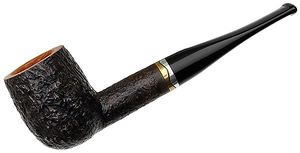
Savinelli’s aesthetic is unique. When Achille Jr. first started the company, the best-selling pipes in Italy were made abroad, mostly in England and France. Rather than trying to generate an entirely new style, he capitalized on this trend by following a classical approach to shaping similar to the English style, only tweaking the proportions slightly to produce designs that at once could both satisfy customers looking for classical shapes and be readily recognizable as a Savinelli. As such, a number of designs within Savinelli’s lineup hold closer to this tradition than others. The 207 straight Apple and the 106 straight Billiard both feature classical lines and shank
and stem proportions, with just a touch of extra visual weight lent to the bowl. The 315 Prince, likewise, captures the form’s timeless silhouette with its rounded bowl and slender, elongated shank and stem configuration. Even some of the marque’s stouter designs, like the 616 bent Billiard, show some distinctly classical cues, nodding to those tight-knit, chubby, early 20th-century English pipes—only scaled up in a much larger design.

There are certain exceptions to this classical theme, however. The 320 KS Author, for instance, is one of Savinelli’s most popular and iconic designs, yet it does not follow this English-influenced theme; instead, it takes a more Italian neo-classical approach, placing a heavy emphasis on the visual weight of the bowl itself. Savinelli’s signature Cobra-like shank designs offer another exception. The 677 KS bent Billiard, the 123 bent Pot, and the 673 Bulldog/Rhodesian all feature the same type of semi-paneled, semi-rounded, triangular shank.
By keeping the shank rounded along the underside, the eye is able to follow a smooth, continuous curve from the heel all the way to the end of the stem, which complements the often fuller proportions lent to the bowl itself. This juxtaposition of smooth, lithe line and full bowl isn’t unique to these Cobra-shanked variations, however; this theme is actually one of the most iconic characteristics of Savinelli’s aesthetic—found across the board, from standard sized designs to extra-large EX designated pieces.
- Gold and silver banded examples, courtesy Doug Valitchka
- Alligator example and details, courtesy Doug Valitchka
Handmade Pipes

While Savinelli’s serially produced pipes account for around 98% of annual production, the marque also creates a number of artisanal, handmade pieces as well. The Autographs, the Creativity line, and the Mr. A. line are all the result of Savinelli’s unique handmade process, with the Autographs reflecting the larger Freehand aesthetic, the Creativity line delving into more complex hand carving, and the Mr. A. line sidestepping the standard shape chart for remarkable and unusual pipes.
All of the briar for Savinelli’s Autographs and other freehand pipes is sourced specifically for those pieces. While the majority of the marque’s serial production is made from extra grade ebauchon blocks, Savinelli keeps a separate supply of Extra Extra plateau blocks for Freehands. This variety of briar is much larger, and of a higher quality, which explains why so many Autographs and Savinelli handmades are naturally larger designs.
- Savinelli Autograph examples and nomenclature, courtesy Doug Valitchka
Note: The following pipe is marked HAND MADE ITALY, and has a Serpent logo on the stem. It is possibly an Autograph second. If you have any information please add it here, or send it to sethile.pipes@gmail.com and we can add it for you.
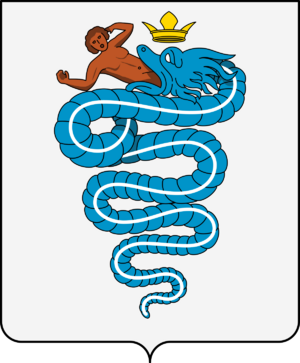
.
- Serpent pipe examples, which appear to be Autograph seconds, courtesy Doug Valitchka
Note: These handmade pieces are shaped much like traditional Danish Freehands: they are shaped first and drilled second. Using this method, Savinelli’s team of artisans is able to showcase their own creativity, as it maximizes flexibility and facilitates a more grain-centric approach to shaping. The resulting Freehand designs are at once both a departure from the marque’s classical standard shapes, yet very much still “Savinelli” in their nature—i.e. proportioned so that the bowl is the visual focus when viewed from the profile, juxtaposed by the comparatively trim lines of the shank and stem. To provide a little more insight into the differences between Savinelli’s standard production and freehand lines, Luisa Bozzetti comments:
- “When we choose to make Freehand pipes we must stop production on the standard shapes. The process for Freehands is much more involved and takes much more time. Finding the best people from the production line and pulling them to make Freehands is challenging since it's not an assembly line, but rather a one or two man operation.
- After the rough shaping of the stummel, we must get together and brainstorm which style of stem will be paired before the pipe can be finished since we do not use pre-shaped stems. All accents and stems for the Freehands are cut from rod here in the factory. A lot of care goes into the few pieces lucky enough to make the cut; to end up with a certain number of Autographs, for instance, means that many, many more will be made, and only the few will be selected.”
The quality control process for Savinelli handmades is even more rigorous than that employed in the standard lineup. Many blocks are started and later discarded because of pits or defects. While Savinelli’s briar sourcing is a constant process, working with some of Italy’s top cutters to ensure only the finest and most suitable blocks make their way to the factory, it’s impossible to source plateau briar that’s completely free from flaws. That’s just nature. Savinelli creates the standard for quality by working through the rough (a very high-quality rough, mind you) to find that shining diamond with the potential to become a Savinelli handmade.
Final Thoughts
Whether it’s a handmade Freehand or one of the marque’s classical shapes, Savinelli has proudly established and maintained a new precedent for Italian pipemaking. Fueled by Achille Jr.’s conviction that Italy should provide the world with not only the finest briar, but the finest pipes, the brand has shifted the spotlight away from English or French marques for the serially produced pipe and has become a bulwark in the pipe community. But this success isn’t exclusive to the Italian market; Savinelli has created a strong presence internationally. Some of this latter success is, in no small part, due to the efforts of Laudisi Distribution Group, the current U.S. distributor of Savinelli pipes. Working closely with the Savinelli team, the group has helped to develop the international market for Savinelli pipes by providing cutting-edge marketing materials and a broader range of offerings to online and B&M retailers all over the U.S.—all with the goal of ensuring the brand’s longevity and relevance for years to come.
Savinelli Balsa System


The Savinelli Balsa System is a filtering system using the natural attributes of balsa wood. It allows the absorption of both moisture and impurities from smoke, without the addition of chemical elements, insuring a clean pipe shank. This absorption ability is due to the extremely porous fibres of the balsa, which allows for a perfect smoke without altering the flavour and aroma of the tobacco.
This patented filtering system has been tested both by the EURATOM Research Center of Ispra and by the CHEMICAL & ENVIRONMENTAL TECHNOLOGY Inc. Research Center (USA) with,more or less,the same results: “..the filter has the ability to absorb 77% of the nicotine and 91% of the tar contained in tobacco without altering the flavour of same”. The filter is uncomplicated and easy to use.
It is advisable to replace it every two / three smokes, or every time you clean the pipe. It is also recommended not to let the pipe sit longer than one day with a used filter inserted. With the insertion of the adaptor (included with the 6mm filters), the pipe can also be smoked perfectly well without the filter.
Savinelli made sub-brands, seconds & order productions
- Alligator
- Amalfi
- Arnold's - 40-50's sub-brand
- Aurelia Ex.
- Baronet
- Bent Bob Pipes - Distributed in US
- Big Nine
- Bing's Favorite
- Black Set
- Bruna'
- Cadet - About 1960's
- Caffè
- Capitol
- Capri
- Capt. Warren - Distributed in US
- Caramella
- Champagne
- Chiara
- Chocolat
- Churchwarder
- Clark's
- Columbus Series (Nina, Pinta, Santa Maria) - Made for the US market only
- Deco with silver 925 ring
- Dr. Forson - Vest pocket pipe like Roley. Unconfirmed!
- Duca Carlo
- Duca di Milano
- Duca di Paolo
- Elegance
- Estella - Rejected "Autograph" pipes
- Extra
- Fiammata - Rejected "Giubileo D'Oro" - Straight Grain
- Flammata - Subrand according to Peaceangel12000@yahoo.com Maybe confused with Fiammata?
- Fuoco
- Gaius
- Ginger's Favorite
- Giotto
- Giubileo Oro
- Grezza
- Grand Prix - About 1960's - Brown Leather covered
- Hercules - XXL pipes
- Horoscope
- Joker
- King's Cross (Imported Briar) - Distributed in US
- Lady Savinelli a pipe designed for women
- La Roma
- La Una - Unconfirmed!
- Linea Artisan
- Linea Più
- Lino
- Logo
- Lolita
- Lollo - Stubby pocket pipe
- Long John
- Mediterranea
- Melange
- Melitta
- Miele
- Molinella
- Monsieur
- Natural
- New Art - Artistic designs that take additional 20 steps of production
- Night&Day
- Noce
- Non Pareil
- ObiOne
- Oceano
- Onda
- One
- Ontario
- Opera
- Oscar
- Panama
- Pannocchia
- Parade
- Petite
- Pisa
- Piazza di Spagna
- Porto Cervo
- Prince of Wales
- Punto Oro
- Qandale
- Rimini
- Riviera - Made for the international market only in the 9mm version
- Roley - Vest pocket pipe; almost identic to "Rolex" by Brebbia
- Roma
- Royal Oak - Distributed in US
- Samanda
- Savinelli Professor
- Savinelli Ecume
- Seta
- Siena
- Sigla
- Silver
- Sistina
- Soireè
- Solaria
- Spigot
- Sport - About 1960's - Chubby shape with very short stem or mouthpiece
- Spring
- Sun-set
- Tevere
- Tortuga
- Toscana
- Trevi
- Tundra
- Vaniglia
- Virginia
- Venere
- Verona
- Corrections and additions to the list are welcome! Registered users can add them directly, or send them to sethile.pipes@gmail.com
Editions in the "Favorite" line
We are compiling a sub-list of known editions in the "Favorite" line of Savanelli pipes, starting with those in Fred Huening's collection. If you know of others, or have additional information about this line of pipes, please add it here, or send them to sethile.pipes@gmail.com and we can add them for you:
- Bing's Favorite
- Byron's Favorite
- Clark's Favorite
- Ginger's Favorite
- Achille's Favorite (apparently I, II, and III)
- Achille's Favorite Examples, via Fred Huening
- Examples and details, courtesy Doug Valitchka
Off site links
- Brian Levine interviews Giacomo Carlesi, the Export Manager of Savinelli, on the Pipes Magazine Radio Show
- Sykes Wilford Blog post on the making of Saviinelli Freehands: Italy 2012: Savinelli Part I
- Visit their website here.
- Savinelli shapes chart here.
- Laudisi Distribution Group (North American Distributors) .
 Savinelli's markings and logos on stems
Savinelli's markings and logos on stems - See how the Convertible BALSA system works here.
- Pipe A Porter: Savinelli Premium Online Shop .




